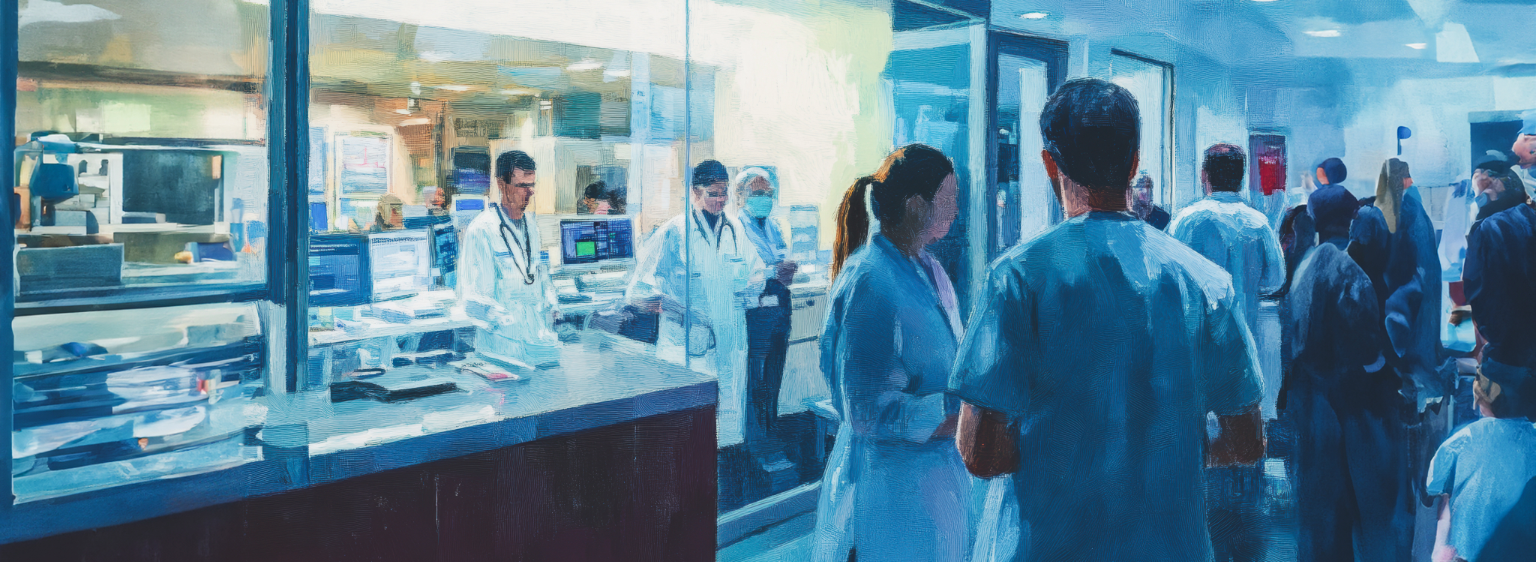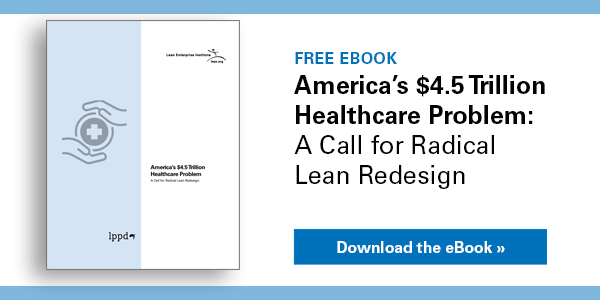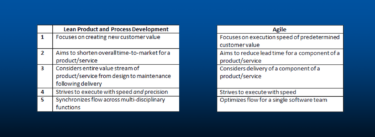Healthcare costs in the US surpassed $4.5 trillion in 2022. And depending on which source you read that’s between $12,555 and $13,493 per capita or 17 to 19 percent of US GDP. This is almost $4,000 more per person than the next highest-cost country. Care durations are generally shorter in the US, but outcomes are no better.* Most of that spending goes to inpatient and outpatient care at hospitals and clinics, and much of that cost goes to “administration.”
This is especially concerning, considering that the essential value created in healthcare is between patient and provider. Despite spending all this money, patients are largely frustrated and confused, and providers are often overworked and overstressed. Something is seriously wrong with a system that is essential to us all. So, it is no overstatement to say that improving healthcare system performance should be on the short list of priorities for our lean community.
Of course, applying lean principles to healthcare is not new. Many healthcare organizations have applied lean principles and practices with good success. One stellar example is the Cleveland Clinic, led by Lean Enterprise Institute (LEI) board member Lisa Yerian, MD, vice president and chief clinical and operational improvement officer. They have accomplished some remarkable improvements as have many other healthcare organizations.
Nonprofit organizations such as Catalysis bring together healthcare practitioners to share best practices and their hard-won experiences. However, apart from a few forays into adapting applications of the lean design method called production preparation process or 3P, these efforts have largely focused on establishing daily management routines and improving existing processes. While I know that much has been accomplished, it’s clear we need a more radical and innovative approach to improving healthcare if we are to continue making progress.
The redesign opportunity
I think there is a substantial opportunity to apply lean product and process development (LPPD) practices and principles to fundamentally redesign healthcare processes and perhaps entire systems the same way we use LPPD to design and develop successful new products and processes. We have seen the tremendous value we can unlock by moving upstream and designing in a lean way from the start instead of reworking existing processes as in many other industries.
We were fortunate to test this hypothesis with the help of some amazing people in the Clinical Design and Innovation (CDI) group at Michigan Medicine. I would like to share a small portion of that story.
The Michigan Medicine story
This story begins with my sarcoma diagnosis and treatment at Michigan Medicine a few years ago. This experience, among other things, gave me a new appreciation for the challenges facing both healthcare professionals and patients.
During this cancer journey, I met some amazing people, joined Michigan’s patient-centered care initiative, and renewed acquaintances with some old friends who worked in healthcare. One was Jack Billi, MD, who was then the associate vice president for medical affairs and professor of internal medicine at Michigan Medicine. Besides being an amazing physician and teacher, Dr. Billi is also a long-time champion of lean in healthcare. He and I talked often about the possible healthcare applications of LPPD.
Billi shared the progress made by the medical center implementing lean management methods. However, he knew there was still much left to do and suspected that LPPD could contribute. To find out what was possible, we went to the gemba to meet people at all levels who were working to improve performance at Michigan Medicine.
Among those we met were Larry Marentette, MD, and Paul Paliani, leaders of the CDI group’s improvement efforts at that time. The CDI team had successfully applied lean tools and methods to several clinical processes, including an enhanced recovery program to reduce re-admissions for colorectal surgery patients and a new electrophysiology rapid follow-up clinic to reduce hospital admissions for patients.
Dr. Marentette and Paliani said these early successes led to higher expectations and a larger workload for them. To meet these new challenges efficiently, they had to dramatically improve their own process. This discussion started a wonderful collaboration between the CDI team, their LPPD coach Matt Zayko, and me, the patient, as we explored the application of LPPD principles to the creation of clinical processes.
Lean design experiments
The CDI team started by examining its own process, working with colleagues to understand and improve clinical processes. Value-stream mapping and reflection events and semi-structured interviews identified three major opportunities to improve the way they worked:
- They experienced long delays in acquiring data and scheduling meetings with key stakeholders and process owners early in the program.
- They did not fully align on goals and objectives for the program with key stakeholders but instead jumped into doing the improvement work too soon, which led to waste of rework.
- They lacked a way to identify and react to issues quickly as a team.
For creating a future state process, the CDI team agreed to try the following LPPD experiments:
- Operate all programs utilizing a common obeya management system and milestones to improve collaboration, communication, learning, and project management effectiveness.
- Start the improvement process with a “study period” to increase stakeholder engagement, experimentation, and learning.
- Create a concept paper using the study period work to align the team and key stakeholders.
- Incorporate design reviews and targeted prototyping to improve problem-solving and increase innovation.
Each of these countermeasures had a dramatic impact on their work. However, in the interest of brevity, I’ll zero in on one: how the team improved the front end of the process.
Adding a study period
To address the problem of doing too much work on a project before fully understanding the current situation or having key stakeholders onboard, the team reorganized its clinical design process into a study phase and an execution phase, consisting of six steps that correlated with medical terminology. The study phase allows the team to develop a deep understanding of the patient, the process, the environment, and align key stakeholders on the vision to improve value creation.
They adopted the “go slow to go fast” mantra. The team used the readiness phase to learn what other healthcare organizations did in similar situations; meet with key leaders to get their support; increase significantly the number, duration, and quality of “go and see visits” before starting work; and pull together a core group of people—including many who normally did not interact with each other—to participate in the gap-analysis work to zero in on the problems to tackle.
The kickoff of the gap-analysis work sessions familiarized all stakeholders with the year-long clinical design process. The CDI team also experimented with creating a concept paper based on what they learned during the study period. Two project managers, Heidi McCoy and Andy Scott, began to create concept papers for their projects based on the work being done during the study period to improve their internal logic, create a better project delivery plan, and most importantly, align with all key stakeholders before the execution phase.
The study period described above—along with cross-functional design reviews and the use of targeted simple prototypes—led to better, more innovative solutions and dramatically reduced the amount of rework experienced on clinical process improvement projects.
Click the link to watch a video of the team sharing their study period experiences: https://www.youtube.com/watch?v=CqkSoyKcAsA. They did some really good work.
Learn more details about the Michigan Medicine CDI experience, by reading Chapter 9 of Designing the Future.)
In this issue of The Design Brief, we shared inspiring work by Carlos Frederico Pinto, MD, the team at Expper Technologies, who created the wonderful Robin, and the CDI team at Michigan Medicine to apply lean design and development principles to improving the healthcare experience for so many people, as well as the VP of advanced technology at GE Healthcare, Jay Hill. Such work gives me hope that together we can indeed design a better healthcare system.
While these stories have been inspiring, the reality is that there is so much more to do. In the US we have a long way to go to achieve the level of system access, improved outcomes, better patient experience, and lower costs that represent value for this work.
For this month’s “challenge” I would first like to sincerely thank healthcare professionals for their hard work and dedication. You have saved my life more than once. Secondly, I would like to encourage more people working in healthcare to add a lean design or LPPD approach to their improvement efforts. It just might be the difference maker you need.
Download the latest issue of The Design Brief
Accelerate Innovation and Optimize Product Development with LEI’s LPPD Consulting and Learning Group Collaboration”
Transform your product development process with LEI’s Lean Product and Process Development (LPPD) coaching services. Our expert coaches help you design and deliver innovative products faster, reduce costs, and optimize workflows. Join the LPPD Learning Group to collaborate with leading companies, share insights, and learn from real-world experiences. Whether you’re just starting or looking to deepen your lean capabilities, LEI is here to guide your journey towards sustainable growth and competitive advantage.
Designing the Future
An Introduction to Lean Product and Process Development.








This is an insightful perspective on the systemic challenges facing healthcare. Having recently returned to the UK, I’ve observed some stark contrasts between the US model and the NHS – a service that, despite its pressures, remains a symbol of universal care. The core issues seem universal: optimising processes, improving patient flow, and empowering frontline staff to solve problems effectively. However, a critical issue in the UK today is the loss of the customer perspective. What was once a unified national service has been fragmented into individual trusts, with limited links between their systems. This creates inefficiencies, silos, and disjointed patient experiences.
In my work helping businesses transform their systems for sustainable growth, I’ve found that lean thinking can deliver results when it’s driven by purpose and leadership. Healthcare is no different. At GoTrueNorth.uk, we believe in simplifying systems and inspiring change, which resonates deeply with the NHS’s need for innovation without compromising care quality.
The question remains: how can we balance innovation, efficiency, and humanity in healthcare systems worldwide? I’d be curious to hear others’ experiences, particularly around how frontline staff can lead improvement.
Thank you for the thoughtful comment, Neil. There are some excellent examples of transformation in healthcare. But these are principally single hospitals versus entire systems. The work Dr. Carlos Frederico Pinto is doing in São Paulo to transform how an entire municipal health system diagnoses and treats cancer patients is a terrific example of system’s thinking. We need more of that 🙂